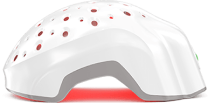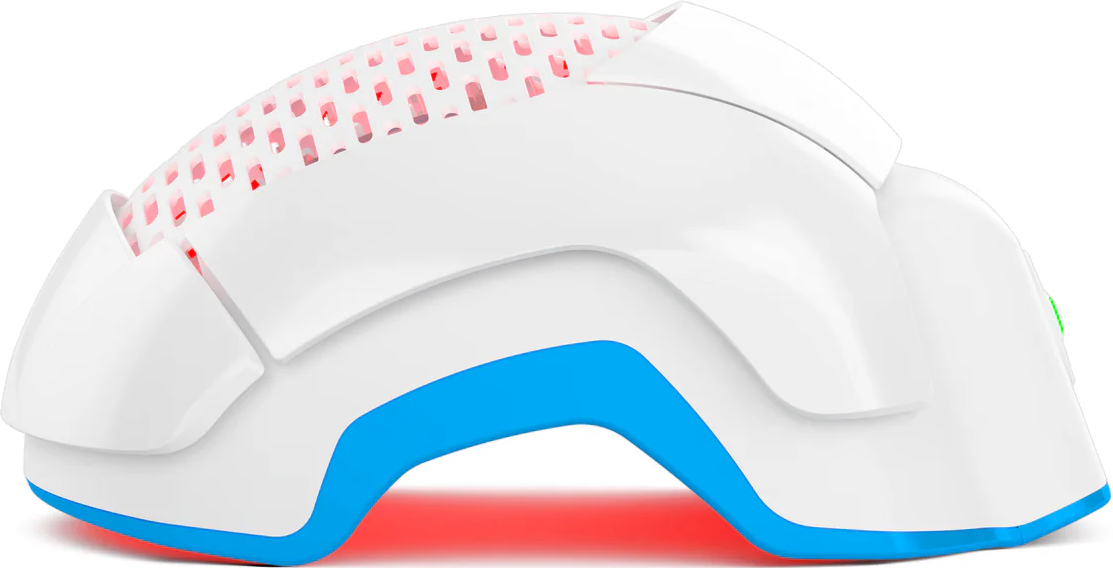Your hair type is determined by how your follicles grow the fibers (shape, curl pattern, strand thickness), rather than by what you put on it. A hair texture chart gives you a map — and when paired with measurements like density and porosity, it becomes a useful tool to guide care.
What Does “Hair Type” Actually Mean?
Hair type is not just “curly vs straight.” It’s a result of how the follicle is shaped, how the cortex inside the strand is structured, and the cell biology that occurs as hair grows. The follicle’s curvature, the arrangement of cortex cells, and asymmetries can cause curls or coils. And texture is distinct from density (how many hairs per area) and porosity (how much water or product it absorbs). They all interact, but they’re not the same.
Biological determinants include genetics and, over time, hormonal shifts (e.g. pregnancy, thyroid changes) can subtly influence how relaxed or tight your curls or waves feel. (Not a full rewrite of your hair, but enough that you may notice differences.)
Why These Distinctions Matter
If you misinterpret density as “thick hair” you may overload your routine. Or treat porosity issues with the wrong fix. Accurately understanding your hair’s structural profile gives clarity, precision — not confusion.
How the Hair Texture Chart Works (and Why It Helps)
The 1A–4C System — What It Does and What It Doesn’t
The system popularly used is the Andre Walker 1A–4C chart. He categorized hair into four main types: straight (1), wavy (2), curly (3), coily or kinky (4), each with letters (A–C) reflecting tighter or looser patterns.
Critics point out its origins: Walker devised it partly for product marketing. Many users don’t fit neatly into one box. Some parts of your head may seem curly, others coily. Also, the letters (A/B/C) sometimes overlap in how different sources define them.
From a clinical perspective, the chart is a heuristic — useful for communication and initial categorization, but it doesn’t replace more objective measures (strand diameter, trichoscopy, etc.). In advanced or diagnostic cases, a trichologist will look beyond the chart.
How to Read Each Hair Type

-
Type 1 (Straight): Hair lies flat, with no visible curl. Subtypes (1A, 1B, 1C) often vary by how much body or “bend” near the ends.
-
Type 2 (Wavy): Gentle S‑shapes or loose waves. 2A is soft waves; 2B, more defined; 2C, almost tight and with some curl.
-
Type 3 (Curly): More defined rings, spirals. 3A is looser, 3B tighter, 3C more tightly coiled.
-
Type 4 (Coily/Kinky): Very tight coils or zigzag patterns, often dense and shrink-prone. Includes 4A, 4B, and 4C (4C often has minimal definition).
Real hair often mixes types. You might see 3A curls on top, 4B at the nape. That’s okay — classification is a guide, not a prison.
Identifying Your Hair Type at Home (Step‑by‑Step)
Step 1 — Start with Clean, Product‑Free Hair
Wash (no heavy conditioners) and let hair air-dry. Observe the “bare” pattern, without interference from styling products.
Step 2 — Observe Curl Pattern & Strand Feel
Look at how each strand falls when wet vs. dry. Is there an S-shape, a spiral, or sharp bends?
Feel: pick up a single strand. Fine hair feels like a silk thread; coarse hair feels more rigid and less flexible.
Step 3 — Assess Density & Porosity
-
Density: Stand over a mirror, part your hair, gauge how much scalp you can see. That gives a rough density cue.
-
Porosity: Many “float tests” are unreliable. True porosity measurements (gas sorption) are done in labs. Instead, observe how fast products absorb, how hair reacts to humidity, or whether it feels brittle — those are practical cues. Also, environmental factors (UV, heat styling, pollution) can raise porosity over time.
You might need to combine these cues to pick the chart type (1–4) plus density and porosity for a fuller picture.
Why Your Hair Type Matters Clinically
Curlier/coily hair often has less efficient natural oil spread, so dryness and breakage risk are higher. Straight hair may appear “greasier” because oil spreads more easily.
Also, tight styles (braids, buns) combined with coily hair can increase traction alopecia risk. The point is… your hair type doesn’t dictate pathology — but it frames your risk landscape.
Treatment Response & Product Absorption
Curl pattern and density influence how light, serum, or topicals penetrate or absorb.
In the context of LPT, dense or pigmented hair may absorb or scatter some light before it reaches the scalp — so device fit and parting become more important.
How Theradome Helps Improve Hair Texture and Density
Let’s get this part out of the way: no laser device is going to morph your 3C coils into silky 1A strands. That’s not how texture works. But what Theradome does — and this matters — is help optimize the conditions that make your natural texture and density look their best.
Laser Phototherapy (LPT), like what Theradome delivers, doesn’t act on the strand itself. It targets the follicle — the little factory underneath your scalp that decides what kind of hair comes out (or doesn’t). Clinical-grade cold lasers (like Theradome’s Class 3R diodes) have been shown to help reactivate dormant follicles, extend the growth (anagen) phase, and improve blood flow — which means better nutrient delivery, better waste removal, and better follicular output overall.
When follicles are healthy and active, they produce hair with more structural integrity. That translates into strands that feel stronger, fuller, and better reflect their true curl or wave pattern. Not the frizzed, broken, “what even is this?” version.
And because LPT doesn’t alter your scalp’s oil production or texture biology, it works across the board: straight, wavy, curly, coily — all textures benefit, as long as there’s a follicle underneath ready to respond.
So no, Theradome won’t change your curl type. But it can help bring out the best in it… by increasing visible density, reducing thinning, and supporting growth you can actually see and feel.
Conclusion
There’s something oddly grounding about just... knowing. Knowing your hair type, your density, your porosity. Knowing it’s not “bad hair” or “problem hair” — it’s just your hair. And it follows rules. Biological ones. Cellular ones. Not TikTok ones.
When you identify your hair type accurately (not by guesswork, not by some glossy shampoo ad), you're better equipped to give it what it actually needs — less trial-and-error, less frustration, more real progress.
Not everything will shift overnight. Hair takes time. But starting with understanding puts you about a mile ahead of everyone chasing the latest miracle serum.
And if you’re looking at treatments like Laser Phototherapy, knowing your texture and density will help you use it more effectively — parting your hair, ensuring light actually reaches the scalp, not just the strand. It’s a simple adjustment. But it matters.
So yeah — take that extra five minutes. Check your strands. Feel them. Map your pattern.
Because once you know what you’re working with?
You stop fighting your hair... and start actually supporting it.






















